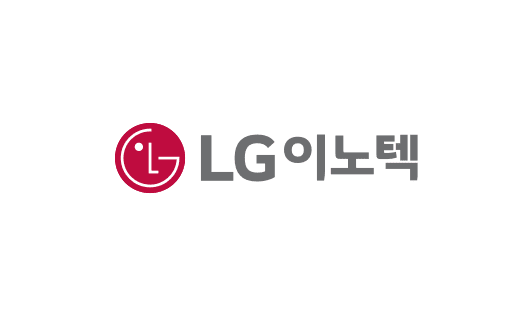View entire menu
전체메뉴
회사정보
회사소개
- 회사개요
- CEO인사말
- 연혁/수상
- 비전/조직문화
- 사업장
- CI
IR
- 경영정보
- 재무정보
- 주식정보
- IR자료실
- 공시
디지털 역사관
뉴스룸
- 보도자료
- 소셜미디어
- 홍보자료
LG Innotek Insights
제품정보
사업부개요
광학솔루션
- Camera Module
- 3D Sensing Module
- Optical Module
- Actuator
기판소재
- Package Substrate
- FC-BGA
- Display Solution
전장부품
- Connectivity Solution
- Autonomous Driving Solution
- Electrification Solution
- Lighting Solution
전자부품
- Power Solution
- Smart Home
ESG
ESG 경영
- CEO 메시지
- 비전/추진체계
- ESG 경영방침
Environment
- 탄소중립
- 자원순환
- 친환경 기술/제품
Social
- 구성원 자부심
- 안전/보건
- 공급망 ESG
- 사회공헌
- 사이버 신문고
Governance
- 경영투명성
- 주주 친화
- Risk Management
ESG Fact Book
- 지속가능성보고서
- 평가/인증
ESG활동
- 친환경 경영
- 사회책임 경영
- 신뢰받는 지배구조
- 외부수상
고객지원
FAQ
고객문의
소프트웨어라이브러리
LG Innotek Insights

Technology for Maximizing the Performance of Electric Vehicle Battery
- Wireless BMS, Expanding the Horizons of EV Technology -
▲ Developers of the Wireless BMS – Dongjae Lee, Ick-hyun Cho, Jaeho Kim, Hyuk-joo Kim
Anyone with an interest in cars likely knows that electric vehicle batteries aren’t just a single unit but a ‘battery pack’ composed of numerous individual cells. To ensure the battery operates properly, each cell must be stably managed, which is the role of the BMS
LG Innotek, a pioneer in both BMS and wireless communication technologies, is focused on overcoming the limitations of wired BMS by developing a Wireless BMS with innovative wireless communication technology. We spoke with the developers behind the Wireless BMS, who are expanding the potential of electric vehicles.
Q. What is a Wireless BMS, and how does it work?
To understand Wireless BMS, It’s helpful to first define what ‘BMS’ means. BMS stands for Battery Management System. It’s an essential system that controls a battery’s operation, managing its voltage, current, and temperature to ensure it operates safely and efficiently. It also sends real-time monitoring of the battery pack’s status to the vehicle’s ECU (Electronic Control Unit).
Electric vehicle battery packs comprise multiple interconnected individual battery cells. So, it’s essential to monitor and manage each cell to maintain overall performance. If a cell’s voltage drops too low or its temperature rises too high, it can affect the safety of the battery and the stability of the vehicle. The BMS continuously monitors each cell’s performance, balances the cells, and ensures the battery remains stable and reliable throughout its lifespan.
The Wireless BMS is an innovation that transitions the BMS communication method from wired to wireless. The BMS consists of two main components, the BMU(Battery Management Unit) and the CMU(Cell Monitoring Unit). The CMU monitors the status of the battery module, which is composed of multiple battery cells, while the BMU manages the status of each CMU. Traditionally, communication between the BMU and CMU was handled through wired connections, but the Wireless BMS enables this communication wirelessly.
Q. What are the advantages of transitioning from a wired BMS to a Wireless BMS?
The primary advantage is that it simplifies the battery pack’s design, reducing both its weight and volume. Wired BMS systems require a large number of cables for communication, which also demands additional components and space to accommodate them. On the other hand, Wireless BMS eliminates the need for these cables, along with the associated components and space, resulting in a simpler structure. This can reduce the battery pack’s weight by up to 198lb compared to wired BMS. Or alternatively, the saved space can be used to add more battery cells, thereby extending the vehicle’s mileage range. Overall, this transition makes installation and maintenance easier and enhances the system’s flexibility and scalability.
Q. What are the differentiated technical advantages of LG Innotek's Wireless BMS?
Incorporating wireless technology into a BMS is a complicated technical challenge. The system must maintain the robustness needed to meet the safety levels required for electric vehicles while also preventing external interference and multipath fading*. However, with over 40 years of unparalleled wireless communication expertise and 15 years of BMS manufacturing experience, LG Innotek has developed a stable and highly reliable Wireless BMS, offering several distinct advantages.
Firstly, our Wireless BMS operates at 800V, the highest voltage among commercially available systems. Thanks to high-voltage, low-power circuit designs and the implementation of an Active Wakeup algorithm, we’ve achieved a significant improvement in performance, especially in reducing standby power compared to our competitors.
Secondly, we’ve established a simulation technology for the first time in the industry for virtual inspection of wireless communication quality. This advanced technology has allowed us to develop a BMS with excellent wireless communication performance.
Lastly, LG Innotek has pioneered the world’s first wireless BMS platform embedded with an RF (Radio Frequency) communication module. Traditionally, integrating a wireless BMS required separate antenna designs for each board. However, our RF module simplifies this process—you can easily achieve wireless functionality by simply adding the RF module to existing BMS and connecting the necessary circuits. In other words, this enables product standardization.
*multipath fading : a phenomenon where wireless signals travel along multiple paths due to obstacles, causing variations in the combined signal strength at the receiver
Q. What customer pain points can LG Innotek’s Wireless BMS resolve?
One of the primary concerns with electric vehicles is their limited mileage range. The relatively shorter range compared to traditional internal combustion engine vehicles has been a hurdle in the adoption of electric vehicles.
As mentioned earlier, integrating a Wireless BMS eliminates the need for cables, reducing the battery pack’s weight by approximately 30 to 90 kg. This also creates an additional 10 to 15% of space within the battery pack, which can be used to increase battery capacity, extending the mileage range by up to 50 km.
Moreover, our Wireless BMS effectively resolves a connection failure between connectors and cables, which is a common cause of battery system malfunctions. With advanced data processing and precise monitoring features, it optimizes the performance and lifespan of the battery, thereby improving operational efficiency for our customers. These advancements cater to the needs of customers in a variety of applications, including electric vehicles and energy storage systems.
Q. What are your plans for the future?
We will be committed to further enhancing the performance of our Wireless BMS and expanding its application across a variety of electric vehicle models. Currently, Wireless BMS holds only about 2% of the market share. However, we plan to help grow this market by securing low-cost wireless solutions and advancing our technological capabilities. In the long term, our goal is to position the BMS as the flagship product of LG Innotek.
Q. Lastly, please describe what makes the LG Innotek‘s Wireless BMS remarkable.
Ick-hyun Cho : I see the Wireless BMS as ‘an innovative solution that elevates electric vehicle safety and efficiency to a whole new level.’ We focus on thoroughly analyzing our customers’ needs and developing products that ensure the highest performance and reliability, with the goal of advancing the electric vehicle industry.
Jaeho Kim : LG Innotek is the only company in the industry capable of managing everything—from development and design to simulation, verification, and mass production. I believe the Wireless BMS is the ‘ultimate’ product, a combination of all of LG Innotek’s strengths.
Hyuk-joo Kim : LG Innotek’s Wireless BMS isn’t just an add-on technology from a company that excels in only one area. It’s the result of ‘perfect synergy’ from a company that not only excels in BMS but is also an expert in wireless communication.
Dongjae Lee : Through that, I’m confident that LG Innotek’s Wireless BMS will revolutionize electric vehicle battery management!
The innovation towards the future of mobility technology, with LG Innotek at its core.

















